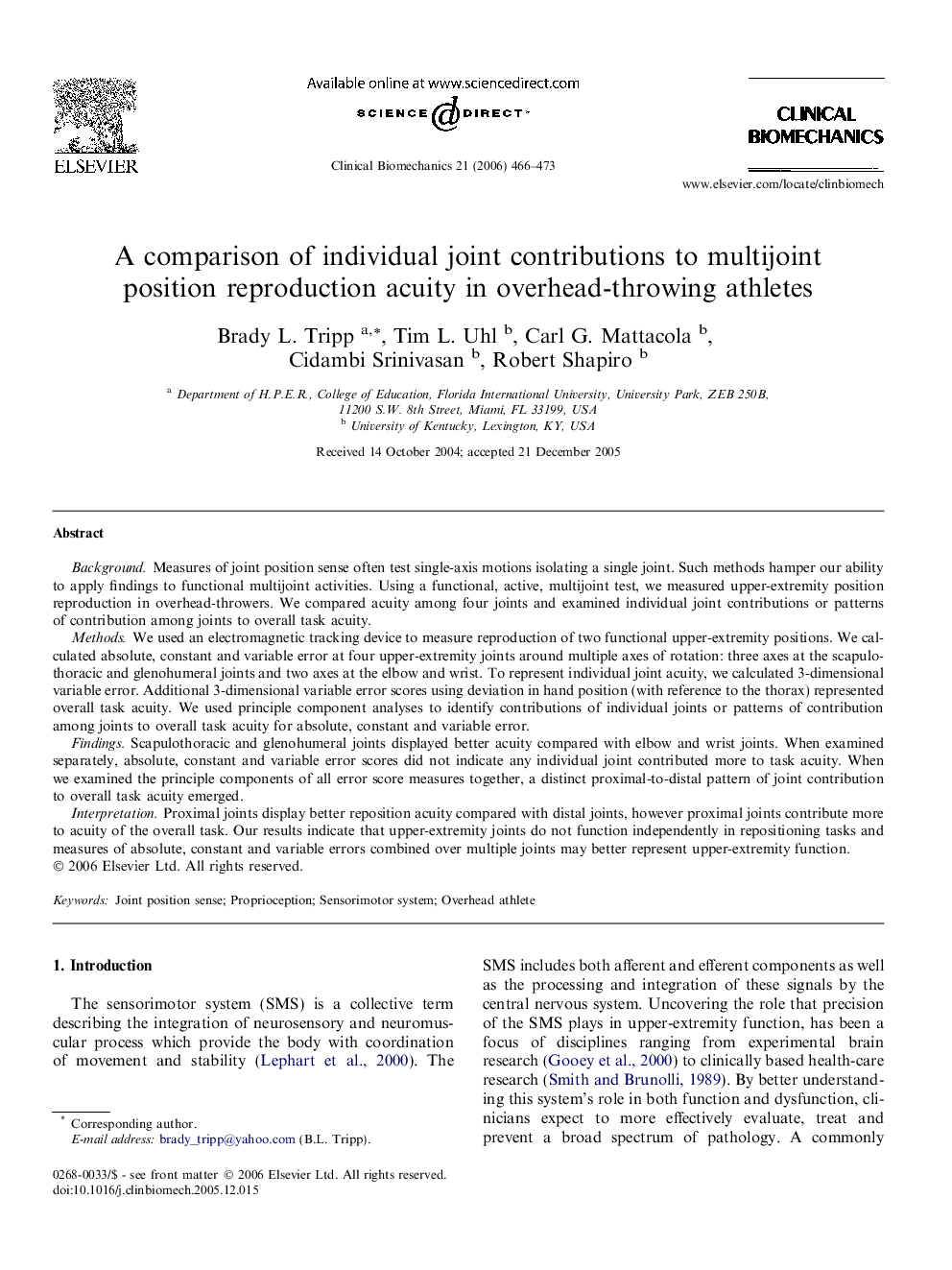| کد مقاله | کد نشریه | سال انتشار | مقاله انگلیسی | نسخه تمام متن |
|---|---|---|---|---|
| 4051741 | 1265010 | 2006 | 8 صفحه PDF | دانلود رایگان |

BackgroundMeasures of joint position sense often test single-axis motions isolating a single joint. Such methods hamper our ability to apply findings to functional multijoint activities. Using a functional, active, multijoint test, we measured upper-extremity position reproduction in overhead-throwers. We compared acuity among four joints and examined individual joint contributions or patterns of contribution among joints to overall task acuity.MethodsWe used an electromagnetic tracking device to measure reproduction of two functional upper-extremity positions. We calculated absolute, constant and variable error at four upper-extremity joints around multiple axes of rotation: three axes at the scapulothoracic and glenohumeral joints and two axes at the elbow and wrist. To represent individual joint acuity, we calculated 3-dimensional variable error. Additional 3-dimensional variable error scores using deviation in hand position (with reference to the thorax) represented overall task acuity. We used principle component analyses to identify contributions of individual joints or patterns of contribution among joints to overall task acuity for absolute, constant and variable error.FindingsScapulothoracic and glenohumeral joints displayed better acuity compared with elbow and wrist joints. When examined separately, absolute, constant and variable error scores did not indicate any individual joint contributed more to task acuity. When we examined the principle components of all error score measures together, a distinct proximal-to-distal pattern of joint contribution to overall task acuity emerged.InterpretationProximal joints display better reposition acuity compared with distal joints, however proximal joints contribute more to acuity of the overall task. Our results indicate that upper-extremity joints do not function independently in repositioning tasks and measures of absolute, constant and variable errors combined over multiple joints may better represent upper-extremity function.
Journal: Clinical Biomechanics - Volume 21, Issue 5, June 2006, Pages 466–473